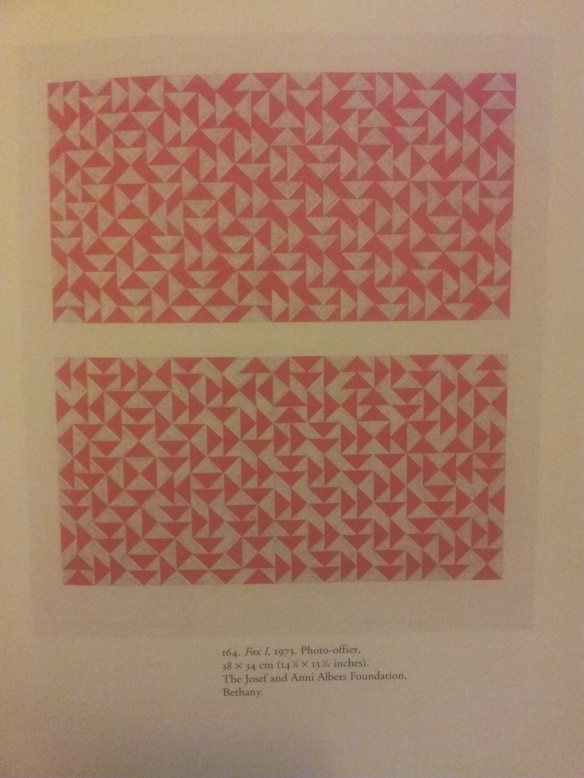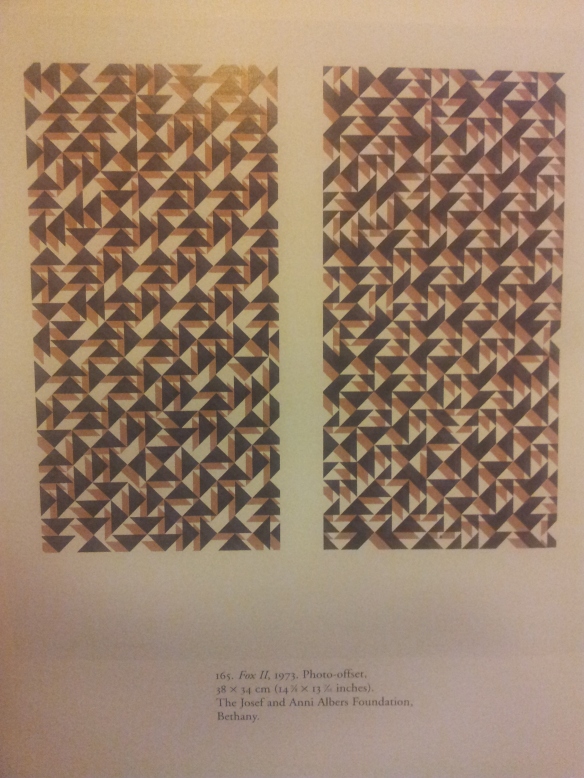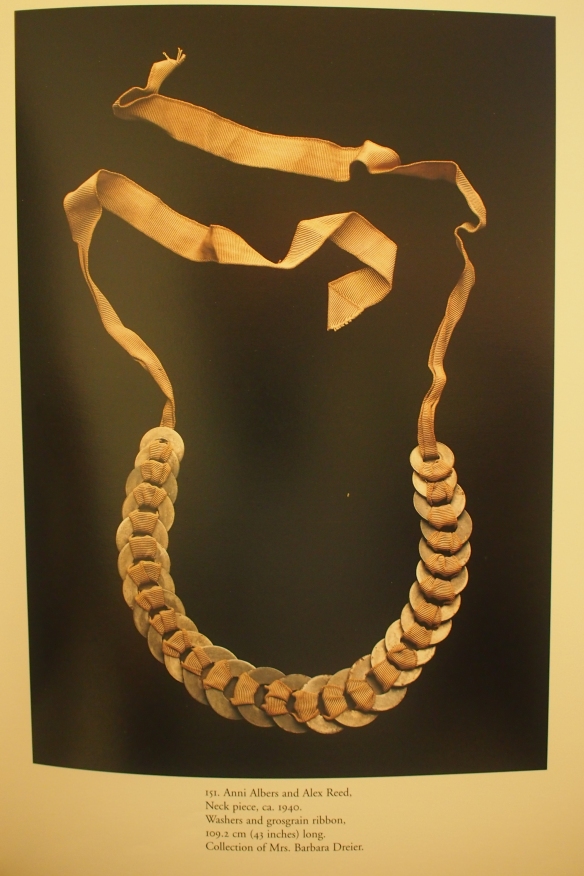Anni and Joseph also loved travelling and often traveled to Mexico,Peru and Chile,living and working there. During this time she received number of important commissions and in 1963 she began producing prints. Her prints were mainly based on geometric patterns as shown below. She was fascinated by the technical aspects of the printing process. Albers spent most of her time on lithography (method for printing using a plate or stone with a completely smooth surface) and screen printing.Gradually her weaving was replaced by printing, which later secured her reputation as someone who breaks the boundaries of arts much like her Bauhaus idealism.
Anni was Bauhaus thinker and created a new vision of the art world. While Anni was an important teacher whose impact was felt in the American textile industry, Bauhaus was the most influential institute of the 20th century that impacted Albers. Anni was a leading figure of the Weaving Workshop at the institute and a founding member. Though Bauhaus played a major role in Anni’s life, she too played an important part in the succession of the school. Anni having introduced new techniques and possibilities influenced students to get out of their comfort zones and try something different and modern. Anni was an important part of the Bauhaus moment and continued to represent her traditional Bauhaus way throughout her life. Anni’s contribution will not be forgotten as she continued to fous on new skills and persuade her students to be creative and seek out modern methods to weaving. She has made weaving what it is today because her commitments and efforts she has become one of the most significant figures in the history of art for women.
 Anni with a student, Black Mountain
Anni with a student, Black Mountain
Following her husband’s death in 1976, Anni kept working , exploring the printmaking technique.She kept exhibiting her work and traveling to mainly Latin America and Europe showcasing her work and lecturing until her death in 1994.Though she was a great aritist she is known more for her writings. She was a key figure in bringing up the appreciation of weaving. She didin’t just rely on the Traditional but more sophisticated and new creative ideas.Towards the end years she became last interested in weaving abandoning it for printmaking, which made her give away all her looms. Being the only instructor at Bauhaus gave her more authority to teach what she believed and since there weren’t a lot of females that taught weaving, her experiments and approach to modern art made her stand out. Anni become more confident about what she was sharing with the world. She was and always will be a pioner in the weaving and printmaking.
One of Anni’s experiments that did not get the attention it deserve was her ability to make unusual jewelry. The pieces were often made up from everyday items such as paper clips, sink strainers, screws and etc. Because her jewelry making was under-appreciated there isn’t much written or said about this aspect of her life.
Reference: Weltge,Sigrid W. “Anni Albers.” Women’s Art Journal 22.1(2001):57-59. JStor.Sierra Coll.Lib.,Rocklin.2 Dec.2008






